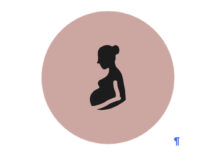 Listening to and investing in young women can help end barriers for assault survivors getting help
Listening to and investing in young women can help end barriers for assault survivors getting help
TORONTO – The Ontario premier recently promised Lia Valente and Tessa Hill, two young grade eight students who gathered some 40,000 names on a petition, that the province’s new sex-ed curriculum will contain a surprising new component — consent. This is surprising only because it has never been included in sex-ed curricula before.
With media attention rampant this year with sexual assaults allegedly perpetrated by the likes of celebrities Bill Cosby and Canada’s own, Jian Ghomeshi, and rape culture apparently prevalent on Canadian campuses, consent should have been front and centre in the curricula for decades.
When consent is withheld, withdrawn or not able to be given that constitutes sexual assault. While teaching consent is an excellent preventative measure and should be applauded, it does not help those who have already survived a sexual assault. Reports repeatedly show that girls, young women, women and even men rarely report an episode of sexual violence.
The 2009 General Social Survey conducted by Statistics Canada showed that 88 per cent of individuals did not report sexual assault to the police. The same survey showed that females were more than twice as likely as males to self-report a sexual assault, and that young people (15 to 24) and Aboriginal people, had experienced the highest rates of sexual assault in the country.
Why is it that so many suffer in silence and do not seek the justice they so rightly deserve?
There are many reasons, but the core is the stigma of reporting a sexual assault, and a lot of that comes from how the media addresses sexual violence. In the past few months, as the news of multiple sexual assaults unfolded, we have witnessed behaviours such as victim-blaming and the refusal of acknowledging rape for what it is.
Survivors of sexual assault experience a great deal of shame and guilt, particularly young women, as they internalize the victim-blaming messages conveyed by the media. This often keeps them from seeking the support they so desperately need.
This stigma is greater when it comes to newcomer, racialized and Indigenous communities. Young women from these communities are not only silenced on a daily basis, they have more barriers in accessing services in general, whether it is due to their status, language, location or their community being disadvantaged because services are not provided.
But what we often omit to bring up is the internalizing of stigmatizing messages by victim support services – in the community, legal and government services.
The reality is that when a young woman reports rape, she needs to tell her story to multiple interveners. Even if shelter workers are aware of the stigma, by virtue of their work and expertise, reporting often involves police officers, courts, government youth services for minors, and others, who can heighten the stigma if they carry with them victim-blaming messages.
Rape culture is a systemic issue: we cannot expect young women to simply “shake-off” stigma as a solution. An approach to addressing challenges and barriers to reporting sexual violence needs to consider the roles that various social actors play in propagating rape culture. It would also need to consider how different young women experience different barriers depending on their class, race, gender, location, ability and status.
Fortunately in Canada, we live in a society that invests in providing support services to survivors of sexual assault. But it is unacceptable if we allow barriers for accessing these services to exist.
At Girls Action Foundation, we are currently concluding a three-year national project that addresses intimate partner violence among young women in Canada. Many young women who took part in this project stressed the guilt and shame surrounding sexual violence.
But there’s an upside to our research: When girls’ critical-thinking skills are developed as part of such projects, they become acutely aware of media messaging and the role it plays in deterring reporting. This then helps put an end to barriers for accessing support services in cases of sexual violence. Or better yet, it helps put an end to sexual violence, period.
This International Women’s Day, we need to encourage more initiatives that are centred on girls and young women. We need to commit to eliminating barriers to accessing support for survivors of sexual violence. And we need to support projects that deconstruct and challenge rape culture.
But most importantly, we must listen and believe young women when they speak.
By Saman Ahsan and Lee Tunstall
Saman Ahsan is the Executive Director of the Girls Action Foundation, a national charity helping to create the next generation of strong Canadian women, based in Montreal.
Lee Tunstall is the Co-Chair of Girls Action Foundation. She is an adjunct assistant professor in the Faculty of Arts at the University of Calgary.







